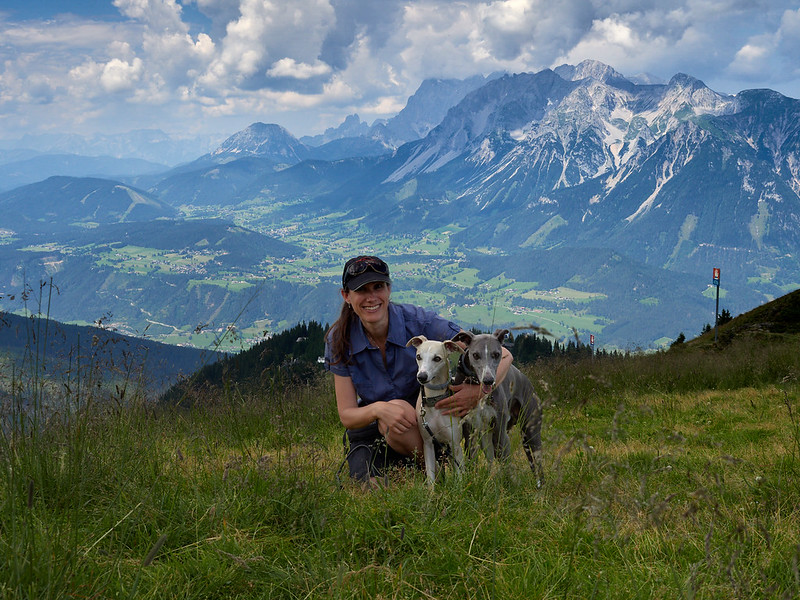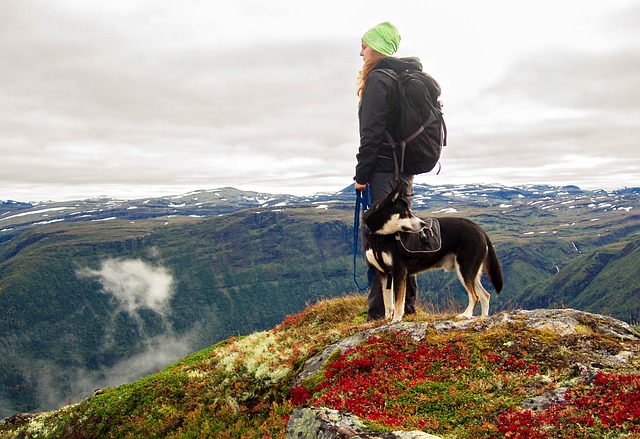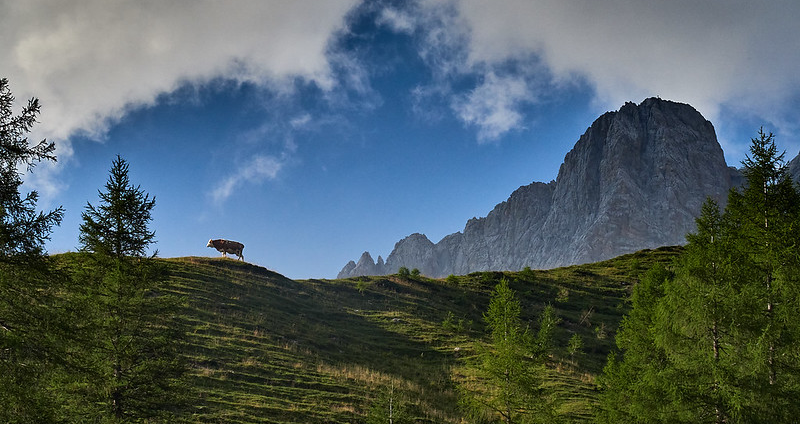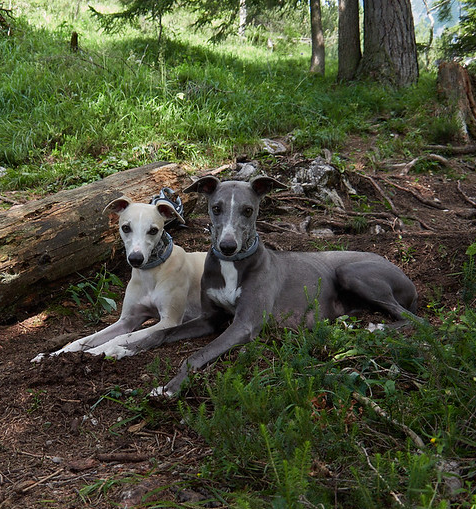Hiking with your dog
Going on a hike with your dog can be a great experience for both you and your companion and will strengthen your bond if it’s done right. To make sure that everyone gets the most out of the experience, you’ll need to prepare yourself and your dog for the challenge of navigating these new paths together as a team.

Know your dog
The most important thing is to know your dog, its abilities and limits. Is your companion full of energy and would take ten walks a day if it could? Or does your dog need to be coaxed into getting off the couch to walk to the next lamp post and back? Your dog’s character traits can already give you an indication of how good of a hiking partner it will be. Generally speaking, every healthy and grown dog can accompany you on a hike. The key lies in choosing your routes and tracks according to your dog’s abilities. Both very small and very large breeds are limited by their respective size and weight and should not be taken on overly long hikes. But the unfamiliar smells and paths are as exciting to them as they are to any dog, so by carefully planning a route that suits their needs you can create an experience that will challenge and entertain them just the right amount.
However, very young dogs and puppies are a different matter. Due to their developing bones and joints, taking them on hikes can cause lasting damage to their health, so it’s best to wait until they are at least a year old.
A trip to the vet before you start your adventure can help you clear up any health questions as well as ensure that your dog is properly vaccinated and chipped.
Training and gearing up
After you’ve made sure that your dog can accompany you on your hike, it’s time to plan your trip. That includes checking the tracks you’re going to be taking for any obstacles or difficulties that may pose a problem for your dog. Steep paths, suspension bridges or cable cars are not every dog’s favourite and can cause stress for both of you if you’re facing them unprepared. But as long as you know what you’re going to be dealing with beforehand, you can either train your dog accordingly or choose a different track.

Apart from carefully planning your routes, being equipped with the proper gear and knowing that you’re prepared for most eventualities can take a lot of pressure off your shoulders as well.
Retractable leashes offer your dog more freedom in exploring but should only be used if you can trust your dog to listen to the recall command. If your dog tends to suddenly suffer from temporary hearing loss whenever you call for it, it might be better to use a standard walking leash with a suitable range. You can strap the leash into the waist belt of your backpack to keep both your hands free.
For a hike a harness is preferable to a regular collar to prevent strain on your dog’s neck. It has the additional perk of allowing you to hoist your dog up more securely if it needs help getting up a steeper path.
Essential in every backpack is a first-aid-kit for your dog, which should include a disinfectant, bandages and tweezers (for splinters, gravel and ticks).
Your dog will also need lots of water to stay hydrated. Make sure to carry enough water and a bowl with you to prevent your dog from drinking out of streams, puddles or lakes, as it might contain bacteria or parasites.
And as always, don’t forget the poop bags, that’s just bad etiquette.
On your journey
Once you’re both prepped and ready to go, it’s time to enjoy yourself and explore new territory with your companion. By laying down a few ground rules you can keep the stress level at a minimum and get the most out of your hike.
Even though some areas and tracks don’t require you to have your dog on a leash, you should consider doing just that. Keeping your dog on its leash can relieve you from the task of constantly checking if they are where they should be. You can also intervene a lot quicker in case an unexpected situation arises. For the same reason, you should be able to trust your dog to listen to the basic commands ‘sit’, ‘come’ and ‘leave it’.
Always important to keep in mind is the fact that you are not alone on your hike. Other people, dogs and wildlife share the outdoors with you and a respectful approach is always the best option to avoid conflict. When crossing paths with fellow hikers, with or without dogs, take a step back and leave them enough space to pass you.

The same principle applies to passing grazing cows. This is a point of concern for a lot of people, but by following a few simple rules you should have no problem navigating this situation. Always keep a safe distance, especially from cows with calves, as they are very protective of them. Keep your dog on a short leash and pass through the area quickly while keeping an eye on the cows in case they do charge at you. Should this happen, free your dog from its leash and run for the closest barrier.

Dogs being the loyal and devoted companions they are, will always try to follow and keep up with you, no matter how exhausted they are. Therefore it’s your responsibility to notice when they are in need of a break, especially on days with high temperatures or when walking in the sun for longer stretches of time. Dogs have a higher risk of suffering from heat stroke as they cool off by panting instead of sweating, so it’s really important that they drink water regularly. Since you shouldn’t be feeding your dog a big meal directly before your hike, a few treats along the way will definitely be appreciated (Don’t forget to pack some for yourself as well, can’t have jealousy ruining a perfectly nice trip). To help your dog relax and rest properly during breaks you can use a blanket from home that usually signals them that it’s time to lay down.
At the end of your hiking day, give your dog – and yourself – a pat on the back for trying something new and adding this experience to your lives. Take the time to evaluate what went right and where you can do better to make this an activity you’ll both want to repeat time and time again. And don’t beat yourself up about the inevitable mistakes you’ll make the first time around, just remember, your dog already thinks you’re the greatest anyways.